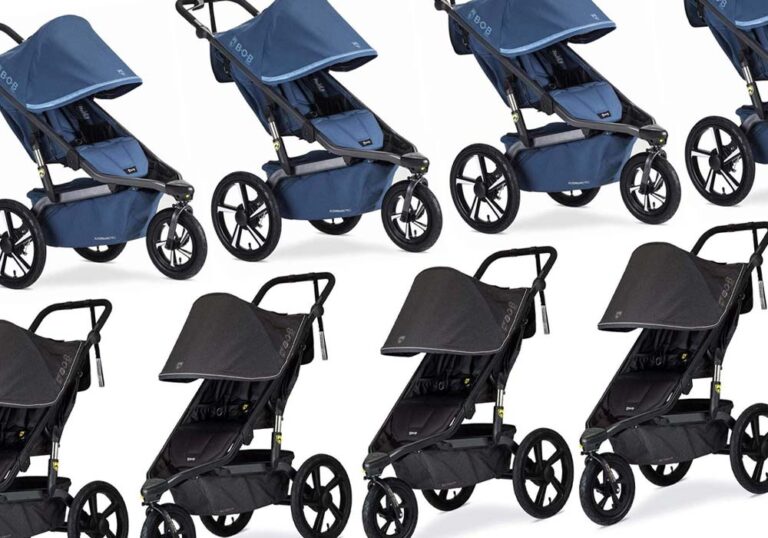Vermont Car Seat Laws 2024 (Rear, Forward & Booster)

Parents and caregivers must follow Vermont car seat laws when traveling with children. These laws ensure the safety of child passengers and are applicable till they are adults.
They include rear-facing, forward-facing, and booster car seats. Once your child outgrows them, they have to wear the seat belt. If you disobey the law, you will have to pay a fine.
- VT Rear-Facing Seat Law
- VT Forward-Facing Seat Law
- VT Booster Seat Law
- VT Child Front Seat Law
- VT Child Seat Belt Law
- VT Taxi Child Seat Law
- VT Ridesharing Seat Law
- VT Child Seat Repl. Law
- Leaving Child in Car in VT
- Choosing a Child Seat in VT
- Seat Installation Help in VT
Disclaimer: The content in this article does not constitute legal advice. It is solely for the purpose of providing information. The law is amended from time to time and the information in this article may not always be up to date. We recommend you check the original source of the law.
Vermont Car Seat Laws
Vermont Rear-Facing Car Seat Law
According to the rear-facing car seat law in Vermont, children below one year of age (regardless of weight) and those weighing less than twenty (20) pounds (regardless of age) must be restrained in a rear-facing position in the back seat. (1) The infant car seat must be federally approved and properly secured.
The car seat must not be installed in front of an active airbag. It can be placed in the front passenger seat only if the front airbag is deactivated. The rear-facing car seat age in Vermont is 1 year. But the Vermont Department of Health recommends at least two years; the longer, the better.
If you violate the Vermont rear-facing child seat law, you will be fined $25 the first time and $50 the second time. Third and later violations will attract a fine of $100.
Age: Newborn to 1 year (Recommended- 2 years)
Weight: Less than 20 pounds
Penalty: $25 for a first-time, $50 for a second-time, $100 for third and subsequent violation.
Vermont Forward-Facing Car Seat Law
There is no specific forward-facing car seat law in Vermont. But children above the age of 1 year and below 8 years and weighing more than 20 pounds must be retrained in an appropriate child restraint system (1).
Such a system can include federally approved forward-facing car seats, convertible car seats, and combination car safety seats.
The forward-facing car seat age in Vermont is 1-8 years. The Vermont Health Department recommends that children ride in the forward-facing seat until they reach the upper height or weight limit of the seat (2). You can find these specifications in the car seat manufacturer’s instructions.
Disobeying the Vermont forward-facing child seat law has a penalty of $25 the first time, $50 the second time, and $100 for the third and subsequent offense.
Age: 1 year to 8 years
Weight: 20+ pounds
Penalty: $25 for a first-time, $50 for a second-time, $100 for third and subsequent violation.
Vermont Booster Seat Law
According to the child booster seat law in Vermont, children between the ages of 1 through 8 years and more than 20 pounds should travel in a booster seat (1).
Once they exceed the requirements of a forward-facing car seat, they can ride in a booster seat. You can choose a backless booster seat or a high-back booster seat.
The booster seat age in Vermont is 1-8 years with no specific height or weight criteria. But to use a booster seat, the child should weigh a minimum of 40 pounds. This typically occurs around ages 5 or 6. They should ideally stay in the booster until the adult seat belt fits them properly, which is until the height of 4 feet 9 inches.
Under the Vermont booster seat requirements, boosters must always be used with a lap and shoulder belt and never a lap-only belt. Violating these regulations will attract fines.
Age: 1 to 8 years
Height: 4’9” or taller
Weight: 40+ pounds
Penalty: $25 for a first-time, $50 for a second-time, $100 for third and subsequent violation.
Vermont Child Front Seat Law
According to the child front seat law in Vermont, there is no particular age for when a child can sit in the front seat (1). Caregivers must know that the front seat is the riskiest position in the car.
The American Academy of Pediatrics (AAP) recommends (3) that children ride in the back seat till they are at least 13 years old.
Since the front seat age in Vermont is unclear, if the child needs to be placed in the front seat, they must be put in a federally approved child restraining system. The airbag of the seat must be deactivated.
The child restraining system must be compatible with the corresponding height and weight requirements of the child. Any breach of this provision will attract a penalty of $25 for the first time, $50 for the second time, $100 for the third time and beyond.
Age: 13 years recommended
Penalty: $25 for a first-time, $50 for a second-time, $100 for third and subsequent violation
Vermont Child Seat Belt Law
According to the child seat belt law in Vermont, children from 8 to 18 years of age must ride with a safety belt system (1).
They should be kept in a booster seat till the adult safety belt fits them properly. You can check this by conducting the 5-step test (4) set by the Vermont Department of Health.
Everyone must follow the requirements under seat belt rules in Vermont. Whether they ride in the front seat or the backseat, children must be buckled in seat belts.
If your child is not wearing a seat belt under the Vermont children’s seat belt law, then you as caregivers will be penalized. There is a fine of $25 for the first time, $50 for the second time, and $100 for the third time and beyond.
Age: 8 to 18 years
Penalty: $25 for a first-time, $50 for a second-time, $100 for third and subsequent violation
Vermont Taxi Child Seat Law
According to the taxi child seat law in Vermont, taxis are exempt from having a child passenger restraint system in place (1). The taxi driver is not responsible for providing a taxi child seat in Vermont.
Since the Vermont child seat laws do not apply to taxis, parents/caregivers should provide or arrange for a car seat. You can choose a convertible car seat that can be used both as a rear-facing and front-facing car seat. All the seats, including booster seats, must satisfy the child’s height and weight requirements.
This exemption does not extend to a vehicle owned or operated by a child care facility. Those vehicles must have a child restraining system in place. If they don’t, they will be fined $25 for the first time, $50 for the second time, and $100 for the third time.
Vermont Ridesharing Child Seat Law
According to the ridesharing child seat law in Vermont, all children under the age of 18 years must be properly restrained (1).
However, it is unclear if it applies to ridesharing services such as Uber and Lyft. Since the only vehicle exempt from the Vermont car seat regulations is a type I school bus, we can infer that they apply to ridesharing cabs also.
Under the law, it is not clear who should provide the child seat. But we recommend that either the parents or the driver provide and install a federally-approved car seat in the vehicle and ensure that the child is properly secured.
There is a fine of $25 for the first offense, $50 for a second offense, and $100 for a third and subsequent violation.
Vermont Child Seat Replacement Law
According to the child seat replacement law in Vermont, there is no legal obligation to replace the child safety seat (1). However, you must replace the child seat after it expires or after a moderate or severe accident in Vermont.
The hot and cold temperature changes inside the car cause the plastic of the car seat to become brittle with time. It can be dangerous and hurt the child (5). Therefore, once the car seat expires, you must change it. It typically lasts for six years.
The National Highway Traffic Safety Administration (NHTSA) recommends child seat replacement after an accident of moderate to severe intensity. It does not need to be replaced after a low-impact accident as long as it meets all the conditions prescribed by the NHTSA (6).
Leaving Child in The Car in Vermont
According to the law on leaving a child in a vehicle in Vermont, there is no express provision against this practice. Hence, leaving a child in a car in Vermont is not illegal.
Even in the absence of a law, leaving a child unattended in a vehicle is not safe. There are multiple risk factors involved.
The child could suffer from a heat stroke, have an in-car accident, or be kidnapped (7). Recognizing the dangers of this practice, many states such as California, Illinois, and Maryland have made leaving a child alone in the car an offense.
So even though Vermont state law does not outlaw this practice, you should not leave your child alone in the car. It puts the child’s health and wellbeing in grave danger.
Choosing a Child Car Seat in Vermont
When choosing a car seat in Vermont, select a seat that is appropriate for your child’s age and size and fits your vehicle properly.
For newborns, you can choose a rear-facing seat that doubles up as a carrier. You can also choose a convertible that can be used later as a forward-facing car seat.
A high-back or backless booster seat can be the best booster seat to use in Vermont. Both raise the child so that the seat belt fits them.
It should fit comfortably over their chest and across the hips. Check the NHTSA recommendations (8) for the best car seat to use in Vermont.
Car Seat Installation Help in Vermont
Every state has an inspection station where you can go and get your child’s safety seat inspected and installed by a Nationally Certified CPS Technician. They give personal instructions to parents/caregivers to install and use the car seats.
In Vermont, there are different inspection stations spread across counties where you can book an appointment. Some of them are:
- Williston Police Department
- Child Safety Seat Fitting Station at the Vermont Department of Motor Vehicles
- Fairfax Fire Department
- Orange County Parent Child Center
- Essex Police Department
- Waterbury Ambulance
Other fitting and inspection stations can be found on the website of the Be Seat Smart Program by the Vermont Department of Health.
Vermont Car Seat Safety Resources
- Be Seat Smart: It is Vermont’s Child Passenger Safety Program that helps parents with car seat guidance and installation.
- Vermont Department of Motor Vehicles
- Vermont Department of Health: The Department’s section on transportation safety provides information on child passenger safety seats in Vermont. It also lists fitting stations and special events for car seat checks.
- The University of Vermont Medical Center: The University of Vermont Children’s Hospital Child Passenger Safety Program is involved in educating parents/caregivers on child safety and child seat requirements in Vermont. It also offers car seat inspections.
- Safe Kids Vermont: Another initiative of the University of Vermont Children’s Hospital, it undertakes car seat checkups and safety workshops for parents and caregivers.
FAQ
How long should a child ride in a rear-facing car seat in Vermont?
In Vermont, a child should ride in the rear-facing car seat till the age of 1 year and till they weigh less than 20 pounds.
Can you put a rear-facing car seat in the front seat in Vermont?
You can put a rear-facing car seat in the front seat but the front airbag must be deactivated. But the backseat is the safest place for the car seat.
Can you put a rear-facing car seat in the middle rear seat in Vermont?
It is difficult to install a rear-facing car seat in the middle rear seat. Therefore it is not safe to put a rear-facing car seat in the middle rear seat.
When can a baby face forward in a car seat in Vermont?
Under Vermont law, a baby can face forward in a car seat when they are older than 1 year and weigh more than 20 pounds.
How old for a booster seat in Vermont?
Legally, children above 1 year of age and weighing more than 20 pounds can sit in a booster seat. But it is recommended that they must be at least 4 years old and weigh at least 40 pounds.
When to use a backless booster seat in Vermont?
You can use a backless booster seat if your child is not old enough for the seat belt and your vehicle’s headrest can support their neck and head properly.
When can a child sit in the front seat in Vermont?
The law does not explicitly prohibit children from sitting in the front seat. But the American Academy of Pediatrics recommends that a child sit in the front seat after age 13.
When can a child sit in the front seat with a booster in Vermont?
Under the law, a child can sit in the front seat with a booster when they are 1-8 years old and weigh more than 20 pounds.
When can a child stop using a booster seat in Vermont?
In Vermont, a child can stop using booster seats after 8 years of age and when the adult seat belt alone fits them properly.
When can a child sit in the front seat in Vermont?
Car seat laws in Vermont do not expressly prohibit children from sitting in the front seat. But the national recommendation for them to sit in the front seat is after 13 years of age.
When to switch from 5 point harness to a seat belt in Vermont?
You can switch to a booster seat belt seat when your child has outgrown the height and weight limitations of a 5-point harness seat, which is typically between ages 5-9.
When can a child use a regular seat belt in Vermont?
A child can use a regular seat belt after 8 years of age. But they must meet the 5-step test set by the Vermont Department of Health.
Do you need a car seat in a taxi in Vermont?
Taxis are exempt from car seat laws. But you should arrange for a federally approved car seat to ensure the complete safety of the child.
Do you need a car seat in a Uber in Vermont?
Yes. Even though there is no express provision in the law, you should have a car seat when riding with a child in an Uber.
Do you need a car seat in a Lyft in Vermont?
Yes. Though the law does not mention anything expressly about it, we recommend you have a car seat when riding with a child in Lyft.

Rishima Rawat
Rishima Rawat is a lawyer and legal writer with over six years of writing and legal experience. She earned her LLB degree from the West Bengal National University of Juridical Sciences, Kolkata. With a passion for child safety, she’s written extensively about the U.S. car seat laws in ParentingMode. She collaborates with businesses and law firms globally, enhancing their online content. Her insights are also published in legal journals like RGNUL, NLIU, and RMLNLU Law Review. Committed to the cause of education, she has volunteered with IDIA, which helps underprivileged children in India to access legal education. She has also worked with Enhelion Knowledge Ventures, a leading legal ed-tech platform in India that provides students with affordable courses in law. Fluent in English and Hindi with elementary proficiency in Spanish, Rishima combines her legal expertise with a dedication to child safety.






